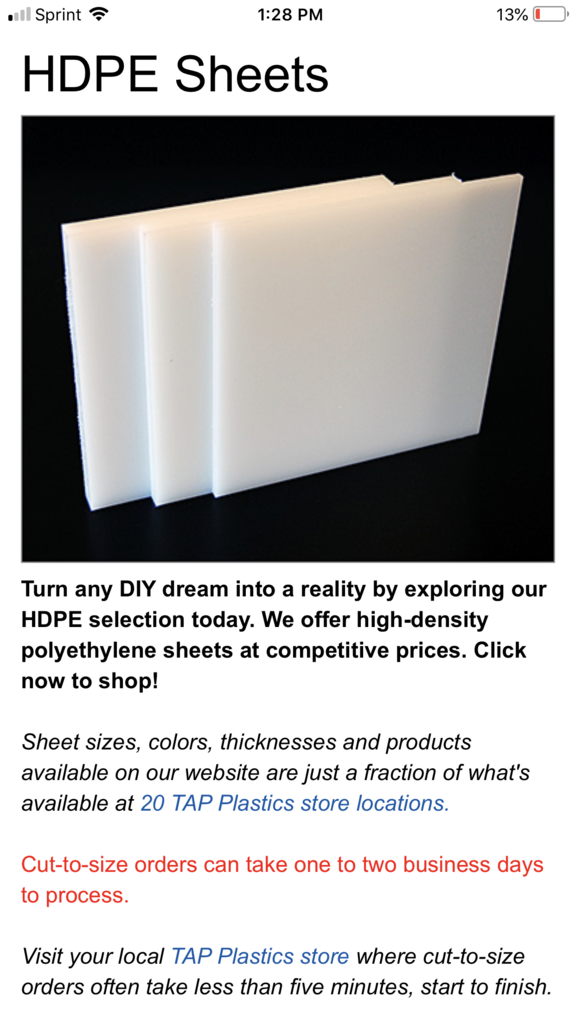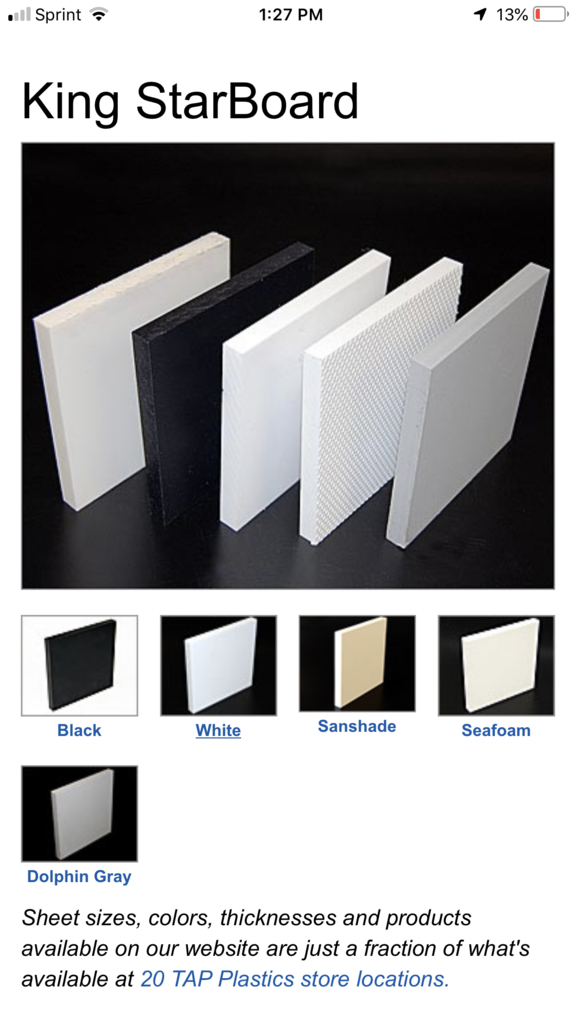HDPE (regular)
HDPE “King Starboard”
ABS
Does anybody know the “True” differences of each?
HDPE “King Starboard”
ABS
Does anybody know the “True” differences of each?
Follow along with the video below to see how to install our site as a web app on your home screen.
Note: This feature may not be available in some browsers.



Whether it is best or not I cannot say, but I always used starboard because it is dimensionally stable (does not absorb water).
marine grade hdpe all the way. marineboard and starboard are brand names of marine grade hdpe. i prefer starboard.
Do you know any pros and cons for either material?
i prefer king starboard because it is less prone to warp and it was the first. and i love innovators.
had to correct a typo in my last post. the other well known brand is seaboard. there are a few others as well, but like i said i prefer starboard. there are various styles as well.
http://www.kingplastic.com/products/king-starboard/


Thanks for your input. Yeah the only difference I can see is that Starboard is UV Resistant and Used for Exterior applications and Regular HDPE is not.
Look what I found.Although Randy May have a different opinion now.
01/16/2010
Randy Holmes-Farley
Reef Chemist

Join Date: Apr 2001
Location: Arlington, Massachusetts
Posts: 86,408
There is certainly nothing wrong with ordinary HDPE for reef aquarium use.
__________________
Randy Holmes-Farley
Current Tank Info: 120 mixed reef
Starting up a new bare bottom tank myself and I wanted to go with frag tiles. that way once corals grow I can remove the tile, frag it and then just replace with a new tile.
could tiles be added into this equation? or is there a negative side i'm overlooking?
Thanks for your input. Yeah the only difference I can see is that Starboard is UV Resistant and Used for Exterior applications and Regular HDPE is not.
Look what I found.Although Randy May have a different opinion now.
01/16/2010
Randy Holmes-Farley
Reef Chemist

Join Date: Apr 2001
Location: Arlington, Massachusetts
Posts: 86,408
There is certainly nothing wrong with ordinary HDPE for reef aquarium use.
__________________
Randy Holmes-Farley
Current Tank Info: 120 mixed reef

both regular hdpe and tiles have been used in reef tanks for years. i’ve used both myself.

Have you heard of regular HDPE breaking down?
Aug 2, 2015
reefwiserLMASR2R Supporter Reef Squad R2R Excellence AwardArticle Contributor Partner Member 2018
I have had club members put this on the bottoms of their tanks with disastrous effect.
Aug 2, 2015
reefwiserLMASR2R Supporter Reef Squad R2R Excellence AwardArticle Contributor Partner Member 2018
Had a tank crash from star board. Club member is a long time reef keeper. I wanted to try bare bottom starboard tank. Didn't go well.
Aug 2, 2015
EckolancerLED GURU
↑
Had a tank crash from star board. Club member is a long time reef keeper. I wanted to try bare bottom starboard tank. Didn't go well.
I would like to know how you figure starboard crashed your tank? It is just plastic based like a lot of other equipment in the tank. If you had barebottom with minimal live rock. You can have faster fluctuations than a tank with say sand or lots of live rock.
Aug 5, 2015
reefwiserLMASR2R Supporter Reef Squad R2R Excellence AwardArticle Contributor Partner Member 2018
The club member removed the sand from his display tank. And placed all rock and corals in the rest of his system. He has a whole fish room setup with breeding clowns and coral frag system. He silicones the starboard to the bottom an put everything back into the tank. From that point on he had noting but problems with the tank till he removed the starboard. This is just a data point your mileage may vary.
eh. probably didn’t wait for the silicone to fully cure.
